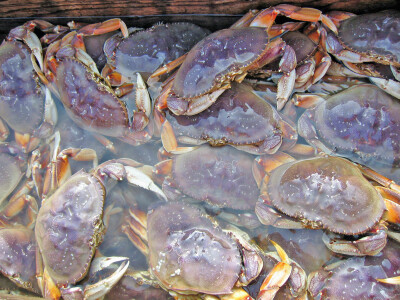NOAA reports a decrease in whale entanglements in the Northeast, Mid-Atlantic and West Coast regions in 2017. The total number of whale entanglements was within a 10-year average, according to a report released today.
In 2017, the Large Whale Entanglement Response Network confirmed 76 large whale entanglements, 70 of which were live entanglements. About 10 percent of those entanglements included fishing gear, according to the agency. The five most frequently entangled large whale species in 2017 included humpback, gray, minke, blue, and North Atlantic right whale.
The total number of entanglements is considered a "conservative estimate," as 14 additional reports were not confirmed by officials.
Whale entanglements were reported in 13 states on both the East and West coasts — 32.9 percent in California waters, 26.6 percent in Massachusetts waters and 9.2 percent near Hawaii.
Crabbers along the West Coast have been very active in efforts to reduce entanglements this year. In October, the Oregon Dungeness Crab Commission voted unanimously to support a multi-year study to prevent whale entanglements, contributing $45,000 toward the first year of the three-year $300,000 aerial survey of humpback, gray and blue whales.
On the East Coast, the New England lobster fishery has worked for many years to reduce interactions with the migration of North Atlantic right whales through the use of time and area closures, as well as wholesale gear changes. Their Canadian counterparts adopted similar changes this year after losing MSC certification related to whale entanglements.







